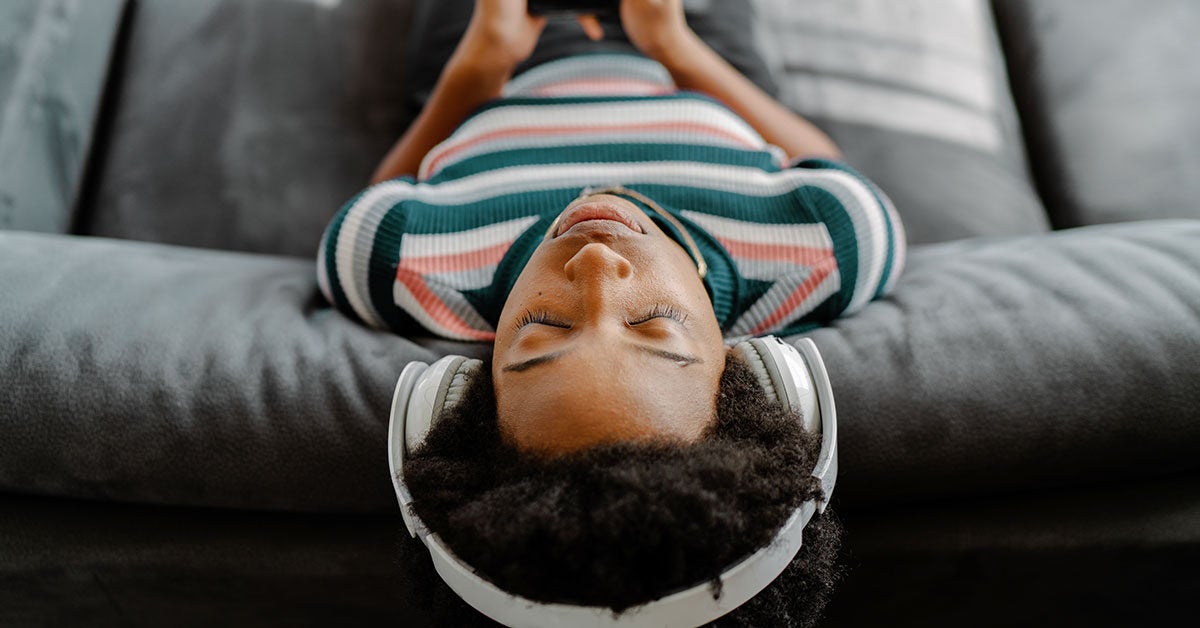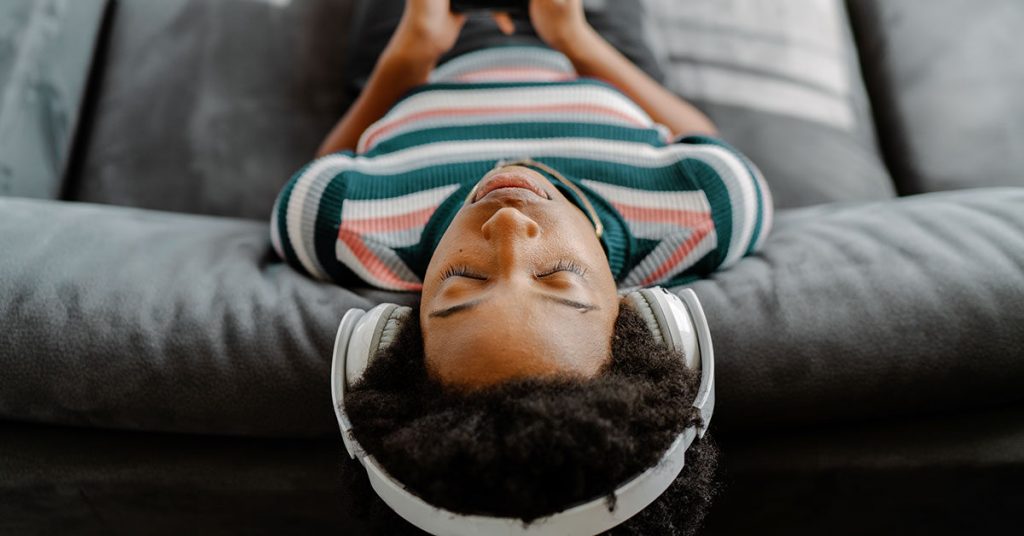
Do you feel constantly on edge for no particular reason? As if your brain is willing to worry about anything and everything? You may have what experts refer to as free-floating anxiety.
The American Psychological Association defines free-floating anxiety as “a diffuse, chronic sense of uneasiness and apprehension not directed toward any specific situation or object.”
To put it another way, you might simply feel worried, nervous, and fearful for no clear reason. Since these feelings tend to emerge without warning, instead of in response to a specific trigger, you might find it tough to predict or manage them.
Free-floating anxiety is the hallmark symptom of generalized anxiety disorder (GAD). An estimated 5.7 percent of people will develop GAD at some point in life, according to a 2021 study. But you can also experience free-floating anxiety even if you don’t have GAD or any other mental health diagnosis.
Read on to learn more about free-floating anxiety, including signs and possible causes. You’ll also find a few coping tips and guidance on getting professional support.
First, a quick refresher on the difference between anxiety and fear.
Fear is reactive. It prompts a fight-or-flight response to a present threat. Anxiety, on the other hand, is proactive. It leads you to worry about a potential threat in the future.
In theory, anything could happen in the future. While certain things may not be probable, they’re still quite possible. This makes it much easier to feel anxious about, well, practically everything. And of course, the future always remains in the distance — so anxiety tends to last much longer than fear, which tends to resolve once the threat has passed.
Anxiety can involve a range of symptoms beyond nervousness, worry, and fear. Some of the main emotional and physical signs of free-floating anxiety include:
Free-floating anxiety differs from other types of anxiety because it “floats” from subject to subject. Other types of anxiety have a specific target. A few examples:
- Health anxiety involves worries about getting sick. You may fret about whether a change in your body suggests a serious illness, for example.
- Obsessive-compulsive disorder can involve a wide range of recurring, unwanted thoughts and worries, though the object of the anxiety can vary from person to person. Germs, danger, and disarray are common subjects.
- Phobias can include both anxiety and extreme fear related to the subject of your phobia. It’s possible to have a phobia of just about anything, but you’ll find some common ones here.
- Separation anxiety involves extreme fear around being separated from a loved one.
- Social anxiety involves worries about social rejection and negative judgment from others.
Of course, these conditions aren’t mutually exclusive. You can have GAD and another anxiety disorder at the same time.
Free-floating anxiety can also happen with other conditions, according to a
So, what causes someone to develop free-floating anxiety? More often than not, a number of factors can play a part.
Genetics
Anxiety can be inherited, and multiple genes can predispose you to anxiety. If you have parents with GAD,
It can help to picture genes like light switches. Certain events in your environment can flip those switches, contributing to the development of anxiety. If you inherit anxiety-related genes from your parents, those switches become a lot easier to flip.
The genes that predispose you to free-floating anxiety can also increase your chances of developing other types of anxiety, such as agoraphobia or social anxiety.
Your genetic makeup also plays some part in your personality, though your environment can also contribute to personality. A 2020 study found evidence of a link between anxiety and neuroticism, a Big Five trait.
Brain development
A 2021 brain imaging study suggests people with free-floating anxiety often have differences in the structure of their brains. Their neurons may be unusually dense in certain areas and sparser in others.
The more densely packed neurons are between two areas, the easier those parts of the brain tend to communicate. With free-floating anxiety, the parts of your brain that control emotion, memory, and judgment may communicate very well or very poorly.
These differences in your brain can cause:
- Heightened threat response. Your stress levels may rise more sharply and quickly when faced with a threat. You might have trouble telling the difference between a serious danger and a more minor or negligible one.
- Negativity bias. You might bring negative memories to mind more easily than positive ones. You might also identify the risks of a plan more easily than any potential benefits.
- Hypervigilance. You might find yourself searching for potential threats even in “safe” situations. You might find it difficult to set your worries aside, even temporarily.
- Difficulty reducing arousal. It may take your brain longer to silence its alarm bells and calm down. While you’re still on edge, it’s easier to perceive potential threats, which restarts the fight-or-flight response.
In other words, your brain structure may increase your sensitivity to your environment, effectively keeping you in an anxious state.
Your environment
If you live in a turbulent, unpredictable, or dangerous situation — political violence, an abusive relationship, or a pandemic, just to name a few — you may face a lot of genuine threats to your well-being. You may feel like danger could come from any direction, at any time.
In these situations, fear is a natural response. If you can’t predict where the danger will come from, it might make sense to remain on guard against everything. That kind of vigilance can offer a sense of control.
But if you remain in that hyper-aroused state for too long, you can become locked in to that new normal. Even when the old threat is gone, scanning for threats can become a strong habit. Your anxiety may simply move to a new target rather than dissolving.
Your brain isn’t being stubborn — it’s simply trying to protect you. If you get hurt again, you might enter a state of panic, which can be exhausting. Your brain may find it easier to keep up a constant, low level of worry than risk a sudden bout of extreme stress.
Children are especially vulnerable to environmental stressors. After all, they usually don’t have much control over their environment, and they haven’t developed the coping methods that adults often possess.
In fact, 2020 research suggests that childhood trauma or abuse can affect how the brain’s stress centers develop. This can cause free-floating anxiety that may last into adulthood.
If you have free-floating anxiety, there’s a good chance you find yourself becoming anxious in many contexts. These tips can help you navigate free-floating anxiety in almost any situation.
Paced breathing
Anxiety can affect your body by making your breaths quicker and more shallow. By consciously slowing your breathing down, you can activate your parasympathetic nervous system. This lets your body know, “The danger is over. It’s safe to relax.”
To try this type of breathing:
- Inhale slowly for about 5 seconds.
- Exhale slowly, also for 5 seconds.
- You don’t have to fill your lungs all the way. A typical breath works just fine.
- Try not to worry about whether you’re breathing “correctly.” Just follow your body’s natural rhythm.
Progressive muscle relaxation
People with anxiety often tense their muscles without realizing it. Progressive muscle relaxation can help you relearn what tension and relaxation feel like in your body.
- Start by making a fist, the tightest fist you can, and hold it for 5 seconds.
- Then relax your hand.
- Note the difference in how it feels.
- You may feel blood flowing in your fingers, or your palm might feel warmer than before.
- Follow this routine for every muscle group. For example, flex your calves for 5 seconds, then release. Tense your thigh muscles for 5 seconds, then release.
- Progress through each part of your body, noting how each feels when you relax.
With practice, you can recognize muscle tension in the moment and switch to a relaxed state at will.
A
Music
Music can have a profound effect on your emotional state. A 2021 review suggests listening to music can both help reduce stress hormone levels and improve your mood.
Contrary to what you may have heard, classical music doesn’t always have more of a calming effect than other genres. In fact, the genre of music may not necessarily matter all that much when it comes to promoting relaxation.
What does matter? The composition of the music. According to a small 2016 study, songs with slower tempos tend to have a more calming effect, as do songs with higher frequency notes. Your personal sense of taste can also affect how relaxing you find a particular song.
Coping techniques can absolutely help, but they generally only offer a temporary solution. In order to lower your anxiety long-term, you’ll generally want to opt for professional mental health treatment.
Support from a trained therapist can go a long way toward relieving symptoms of any anxiety condition, including free-floating anxiety.
You don’t need to have a particular diagnosis to get help for free-floating anxiety, or any other mental health or emotional concern, for that matter.
In a nutshell, when any type of worry or emotional distress becomes consistent enough to affect your life, you can usually benefit from treatment.
The right therapist can help you develop a treatment plan that includes therapy, medication, or both.
Therapy
Common therapy approaches for anxiety include:
- Cognitive behavioral therapy (CBT). This approach can help you change anxious thinking patterns and reduce avoidance or procrastination behaviors.
- Mindfulness-based stress reduction. This approach can improve your awareness of your anxiety and its triggers, as well as boost your resilience to stress.
- Music therapy. This approach involves guidance from a professional music therapist, who might use soundscapes and relaxation techniques to help ease your anxiety.
Medication
- Antidepressants are often the first-line medications for free-floating anxiety. They can help lower your overall anxiety level, which you may find particularly helpful for free-floating anxiety. You’ll typically take a pill every day.
- Anti-anxiety medication tends to offer more short-term, as-needed benefits. These medications generally treat intense bouts of anxiety, rather than pervasive worry. A doctor or clinician might prescribe anti-anxiety medication if you also have panic disorder.
Keep in mind that treatment typically won’t end anxiety completely. Eliminating all negative or unwanted emotions from your life actually isn’t all that helpful.
Treatment instead aims to help lower anxiety to more manageable levels. To put it another way, it can improve quality of life and daily function, but it won’t change who you are as a person.
Free-floating anxiety refers to a pattern of chronic worrying that doesn’t land on any particular target. It can affect your health in plenty of (often unexpected) ways, from changes in sleep cycles to altered productivity at work or school.
If your symptoms begin to affect daily life, reaching out for professional treatment is always a good next step.
When getting treatment for anxiety, you have many options to choose from. Don’t hesitate to try different approaches until you find one that works well for you.
Emily Swaim is a freelance health writer and editor who specializes in psychology. She has a BA in English from Kenyon College and an MFA in writing from California College of the Arts. In 2021, she received her Board of Editors in Life Sciences (BELS) certification. You can find more of her work on GoodTherapy, Verywell, Investopedia, Vox, and Insider. Find her on Twitter and LinkedIn.

